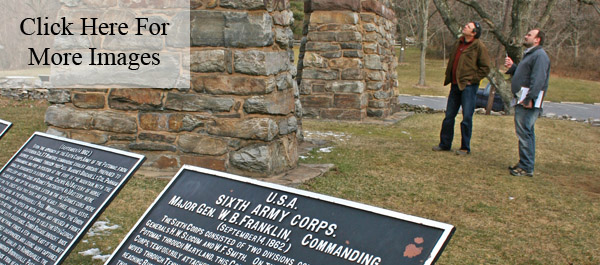Summary of the Battle Of South Mountain, an eastern theater Civil War Battle during the American Civil War
Battle Of South Mountain Summary
Location
Frederick County and Washington County, Maryland
Dates
September 14, 1862
Generals / Commanders
Union: George B. McClellan
Confederate: Robert E. Lee
Soldiers Engaged
Union Army: 28,000
Confederate Army: 18,000
Outcome
Union Victory
Casualties
Union: 2,300
Confederate: 2,600
The Army of the Potomac Finally Beats Bobby Lee’s Boys
Although it has long languished in the shadows cast by Antietam, the September 14, 1862, Battle of South Mountain was in itself a battle of great importance and profound consequence. It was the first major battle fought north of the Potomac and it was there-and not at Antietam-where Lee’s first invasion of Union territory was initially met-and turned back. It was a daylong fight, spread out across many miles of rugged, mountainous terrain, as the two sides slugged it out for control of several key mountain passes. Total casualties exceeded 5,000 men, killed, wounded, or captured, a number comparable to those lost at First Bull Run. By day’s end, George McClellan and his Army of the Potomac emerged triumphant; their first major victory of the war. Conversely, and for the first time since he assumed army command three-and-a-half months earlier, Robert E. Lee suffered a serious battlefield defeat. That night, in ordering a retreat from the mountain, Lee also decided to bring an end to his invasion north. Lee’s retreat took him some eight miles westward across the Antietam Creek where he hoped to regain his lost initiative and score a victory on Union soil. As at South Mountain, however, here again Lee was defeated at the hands of McClellan and his victory-flushed Army of the Potomac.
No tour of the Civil War’s eastern battlefields is complete without a visit to South Mountain, especially this year, as we observe and commemorate its Sesquicentennial Anniversary. While there, pay special attention to the nature of the ground over which the two sides fought; for most of the soldiers in both Blue and Gray who fought here, this would be the worst, most rugged terrain on which they would battle during the entirety of the war. But please keep in mind that much of what was the South Mountain battlefields remains in private hands, so do observe all posted notices and, please, no trespassing.
Here are a few suggested “must see” sites to include in your visit.
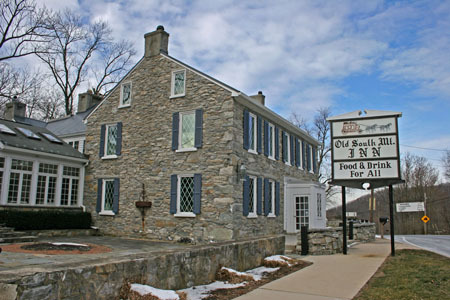 The Old South Mountain Inn
The Old South Mountain Inn
This stately stone structure, built in 1732, served as the command hub for Confederate forces under both Daniel Harvey Hill and James Longstreet during the Battle of South Mountain. Known then as the Mountain House, it long served those traveling on the east-west running National Turnpike, the road that cuts through the mountain, here at Turner’s Gap. One can imagine the busy scenes as exhausted, sweating Confederate forces raced up this road from Boonsboro, at the mountain’s western base, to help confront the Union forces sweeping up the mountain, north and south of Turner’s Gap.
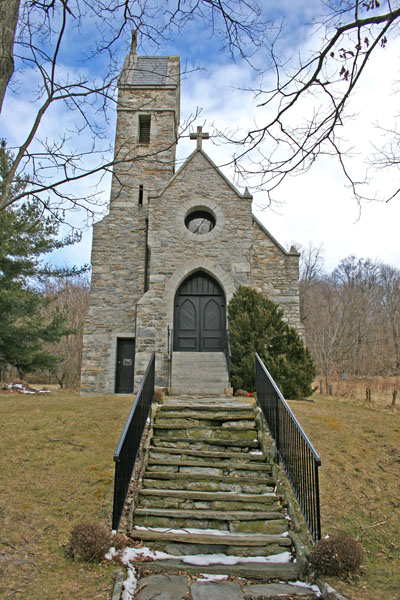 Dahlgren Chapel
Dahlgren Chapel
This structure was not in existence at the time of the war, but it does have an interesting Civil War connection. After the war, Madeline Vinton Dahlgren, the wealthy widow of Admiral John Dahlgren, purchased and resided in the Mountain House, which she then dubbed Dahlgren Manor. The widow Dahlgren then paid for the construction of a private chapel, across the Turnpike, using stone quarried from the mountain slopes. Begun in 1881, the impressive Gothic revival chapel was consecrated three years later as the Chapel of St. Joseph of the Sacred Heart of Jesus.
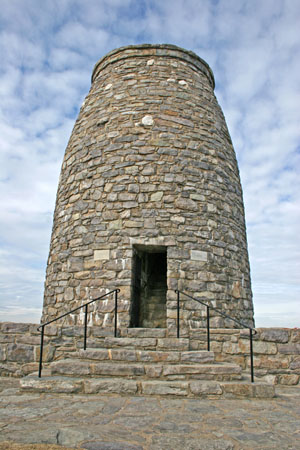 Washington Monument
Washington Monument
Be sure to take the time to stop by the visitor center for the Washington Monument State Park and then hike to the summit where you will find the nation’s first monument dedicated to the memory of George Washington. Construction of this monument commenced in 1827 but, by the time of the battle, had fallen into disrepair. Still, from here citizens of Boonsboro watched some of the battle action unfold, while during the Battle of Antietam, this was the site of a Federal signal station. The view from here is simply breathtaking. Be sure to pack your binoculars.
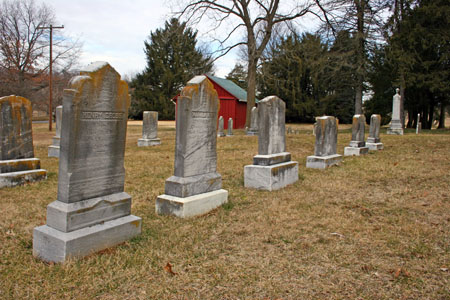 Mt. Tabor Church Site
Mt. Tabor Church Site
General Joseph Hooker used the Mt. Tabor Church as his headquarters during the battle. As you face west toward the mountain, George Gordon Meade’s division, composed of three brigades of Pennsylvania Reserves, were deployed to your front and right while, to your left, stretched the brigades of Major General John Hatch’s division. From here you can gain a good understanding of the difficulty of the terrain faced by the Union forces as they struggled up the mountainside. As Hooker later noted, the mountain “slopes are precipitous, rugged, and wooded, and difficult of ascent to an infantry force, even in absence of a foe in front.” The church that once stood here was destroyed in a fire well after the war, but the little Mt. Tabor Lutheran Cemetery remains.
Marameade
Union army commander George McClellan used this impressive home as his headquarters during the Battle of South Mountain, watching the action unfold from the high ground southwest of the house, which was also lined with some artillery. It is interesting to note that all the once and future commanders of the Army of the Potomac either passed by or stopped at this house on their way to the front: McClellan, Burnside, Hooker, and Meade.
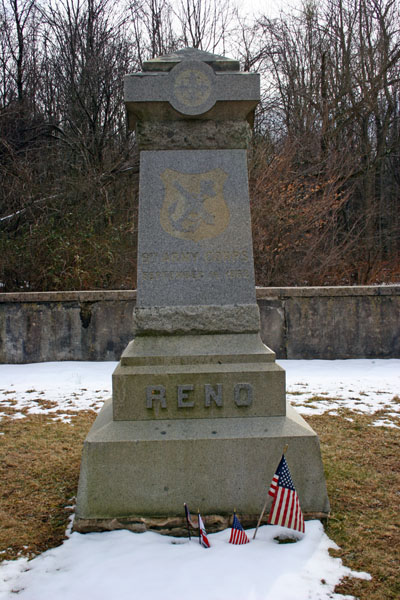 The Reno Monument
The Reno Monument
Major General Jesse Reno, commanding the Union Ninth Corps, was one of the highest-ranking generals to give his life during the Civil War. He fell at twilight very near the spot where this monument, unveiled and dedicated in 1889, now stands. Orlando Willcox, one of Reno’s division commanders during the battle, delivered the dedication address to an appreciative crowd of largely Ninth Corps veterans who returned to pay tribute to the memory of their fallen commander. The action for possession of Fox’s Gap would have swirled all around you. Please note that the hilltop here was open during the time of the battle and was owned by Daniel Wise, whose cabin home stood where the dirt parking lot is now located. Please exercise great caution as you enter and exit this parking lot, for it is a blind intersection.
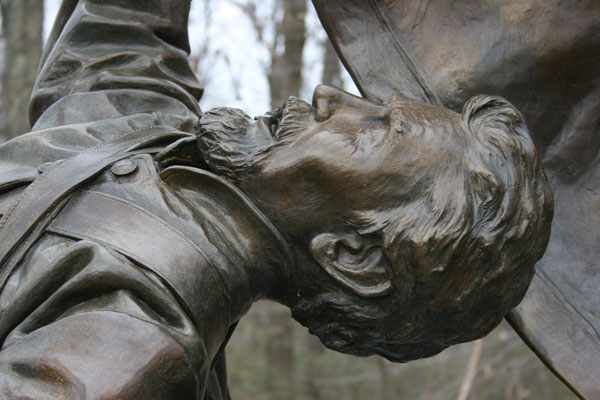 The North Carolina Monument
The North Carolina Monument
A pleasant hike along the new Garland Trail will take you to the North Carolina Monument. Dedicated in 2003, this monument, sculpted by Gary Casteel, honors the many North Carolina regiments that struggled for possession of Fox’s Gap against an ever-increasing number of Federal troops. The North Carolinians who suffered the worst casualties were of Samuel Garland’s brigade, who for more than two hours battled it out with Jacob Cox’s Ohioans of the Kanawha Division before finally driven from the field with great loss. Among the fallen was brigade commander Samuel Garland, a Virginian, though highly regarded and respected by his North Carolinians. A small monument, just a few yards from the Reno Monument, marks the spot where Garland fell. Of interest, future president Rutherford B. Hayes was severely wounded while leading his 23rd Ohio Infantry against Garland’s North Carolinians. Carried from the field, he was cared for by regimental surgeon Joseph Webb, the brother of Hayes’s beloved wife, Lucy Webb Hayes. The future president was then taken to the Jacob Rudy house, in nearby Middletown, which still stands at 504 West Main Street.
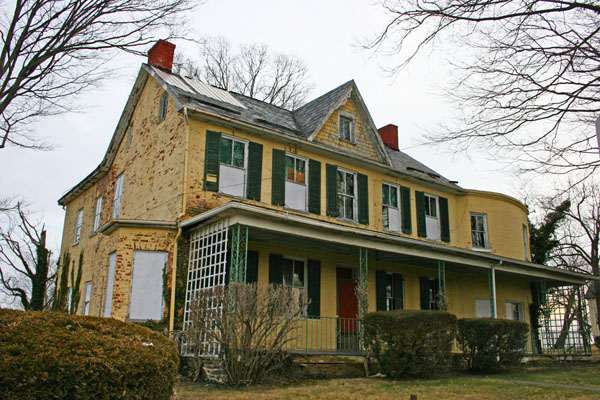 The Martin Shafer House
The Martin Shafer House
Union Sixth Corps commander William B. Franklin, first in his West Point Class of 1843, used this home for his headquarters while his men battled for possession of Crampton’s Gap. Burkittsville is one mile to the west and South Mountain rises beyond town; the Catoctin Mountains rise behind you to the east. For those who believe McClellan was a timid commander, consider Franklin’s assignment for that September 14: his Sixth Corps was to march from its campsites east of the Catoctin range, cross that mountain and from there march to Burkittsville-in all roughly thirteen miles-then fight its way up and across South Mountain at Crampton’s Gap, then turn south down Pleasant Valley, defeat Lafayette McLaws’s force on Maryland Heights, thereby freeing the trapped Harpers Ferry garrison and, finally, with those men in tow, to turn back around and assist Burnside six miles north at Turner’s Gap! Franklin arrived at the Shafer house shortly before noon and while waiting for his men to catch up, set up his headquarters and invited his generals for lunch. One can only imagine the scene: Confederate gunners lobbing shells from the mountain side, skirmishers battling it out in town, as Franklin, Henry Slocum, William F. Smith, Winfield Scott Hancock, and John Newton ate enjoyed their noonday repast then a round of cigars.
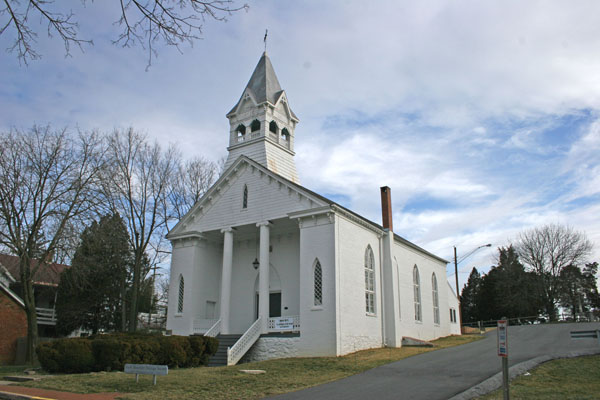 The Churches of Burkittsville/Burkittsville Park
The Churches of Burkittsville/Burkittsville Park
One cannot help but be swept up in the rustic charm and beauty that is Burkittsville, a town that retains much of its Civil War look. Indeed, if veterans of the fight here returned to the historic town today, they will no doubt recognize most of its homes and alleyways. Both of these churches-the German Reform Church, built in 1829, and St. Paul’s Lutheran Church, constructed thirty years later-were used as hospitals after the battle. Walk either through the Union Cemetery or, for perhaps a better view, to the Burkittsville Park just a few yards away, and look northward. Federal troops of Henry Slocum’s division formed up in the fields to your front, before sweeping forward-from your right-to-left-over that rolling terrain toward the mountain and toward a thin line of Confederates at its base, along Mountain Church Road. Watching the attack from the Cemetery, Winfield Scott Hancock remembered the scene as “the pageantry of war.”
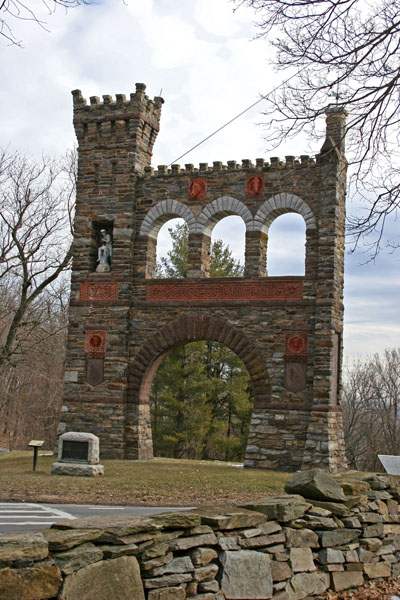 Crampton’s Gap & The War Correspondents’ Arch
Crampton’s Gap & The War Correspondents’ Arch
Certainly, the War Correspondents’ Memorial Arch must rank among the more unique monuments of the Civil War. Erected in 1896 by George Alfred Townshend, this memorial honors those who, like himself, covered the war in print, in photograph, or in illustration. The final, dramatic scenes of the struggle for Crampton’s Gap played out here in the waning daylight of September 14; the area where the Arch and all the surrounding buildings of “Gathland” now stand witnessed a whirlwind of battle as broken ranks of Confederates streamed up the hillside, then down its western slope. Panting Federal troops under Bartlett, Newton, Torbert, and Brooks moved up after them, right on their heels. Chaotic scenes unfolded on the mountain slope and on the summit. In the field behind you, near the parking lot, Brigadier General Howell Cobb tried, in vain, to rally his broken and shattered ranks. The flagstaff he was carrying was cut in two and his brother-in-law fell dead beside him.

